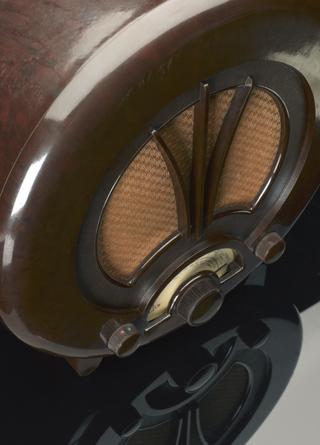










Telstar maser assembly with magnet, made by Mullard Research Laboratories, Redhill, Surrey, England, 1962-1967.
Maser stands for microwave amplification by stimulated emission of radiation. When this maser was designed, signals relayed through communications satellites were very weak when they returned to the earth, meaning that they needed to be amplified. This maser was designed to efficiently amplify the signal whilst avoiding amplifying background noise from the signal. The signal would leave the maser 10,000 time stronger than when it arrives. It was used at the Goonhilly satellite station in Cornwall to amplify signals from the Telstar satellite.
Details
- Category:
- Radio Communication
- Object Number:
- 1967-427
- Materials:
- iron, plastic (unidentified), copper (alloy), foam and magnets
- Measurements:
-
overall: 1180 mm x 690 mm x 610 mm, 197kg
- type:
- maser
- credit:
- Donated by Mullard Research Laboratories




